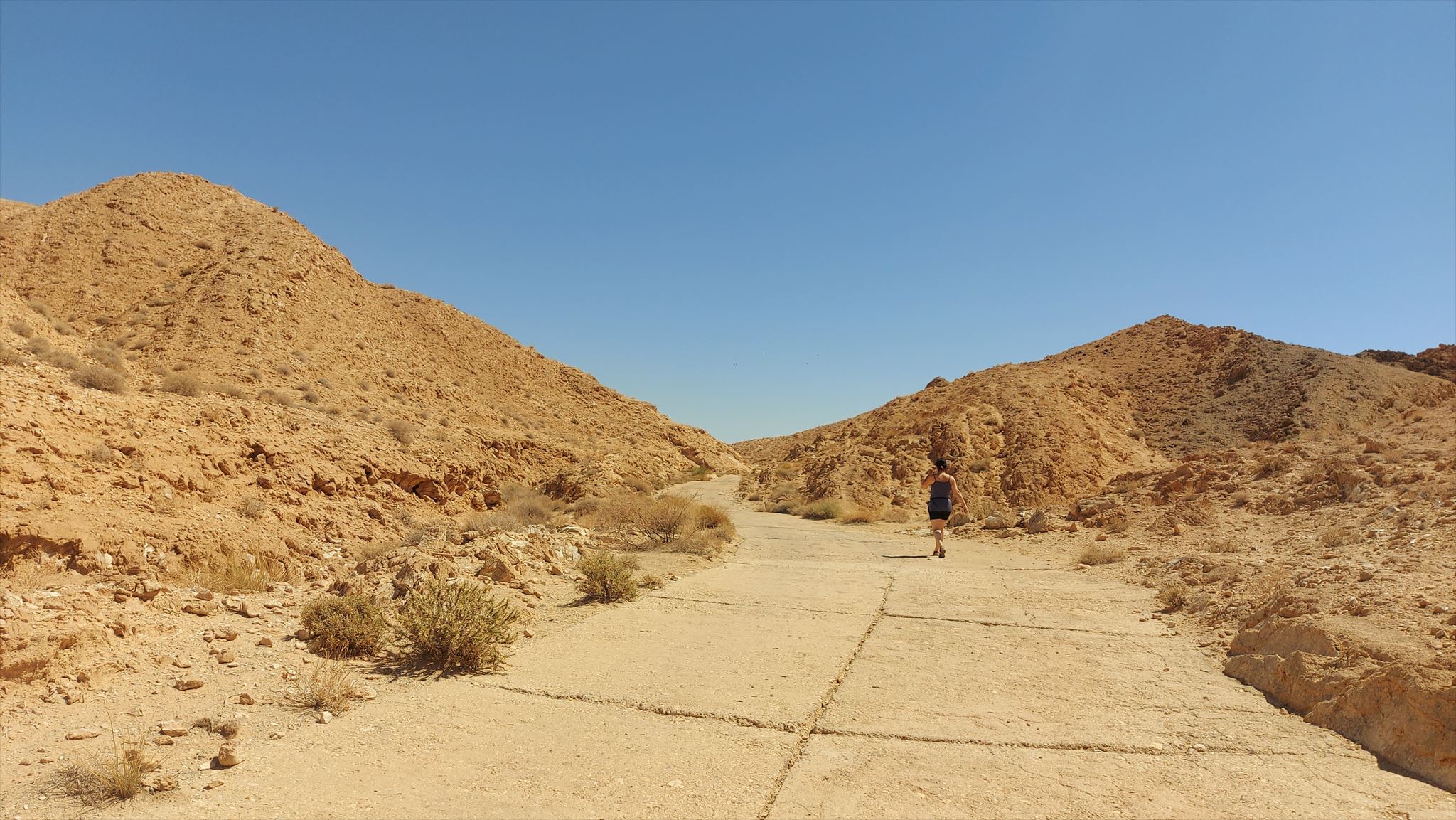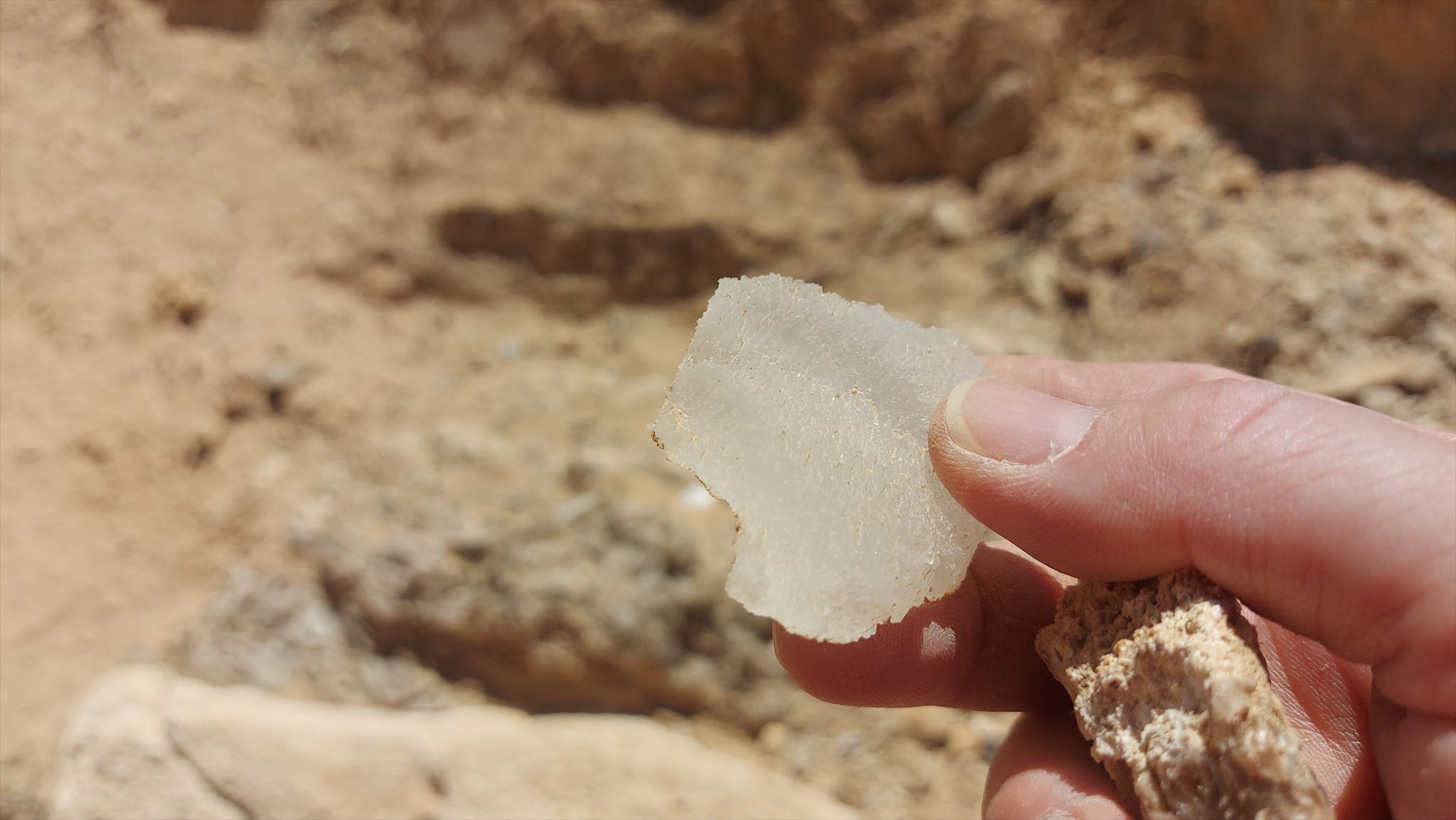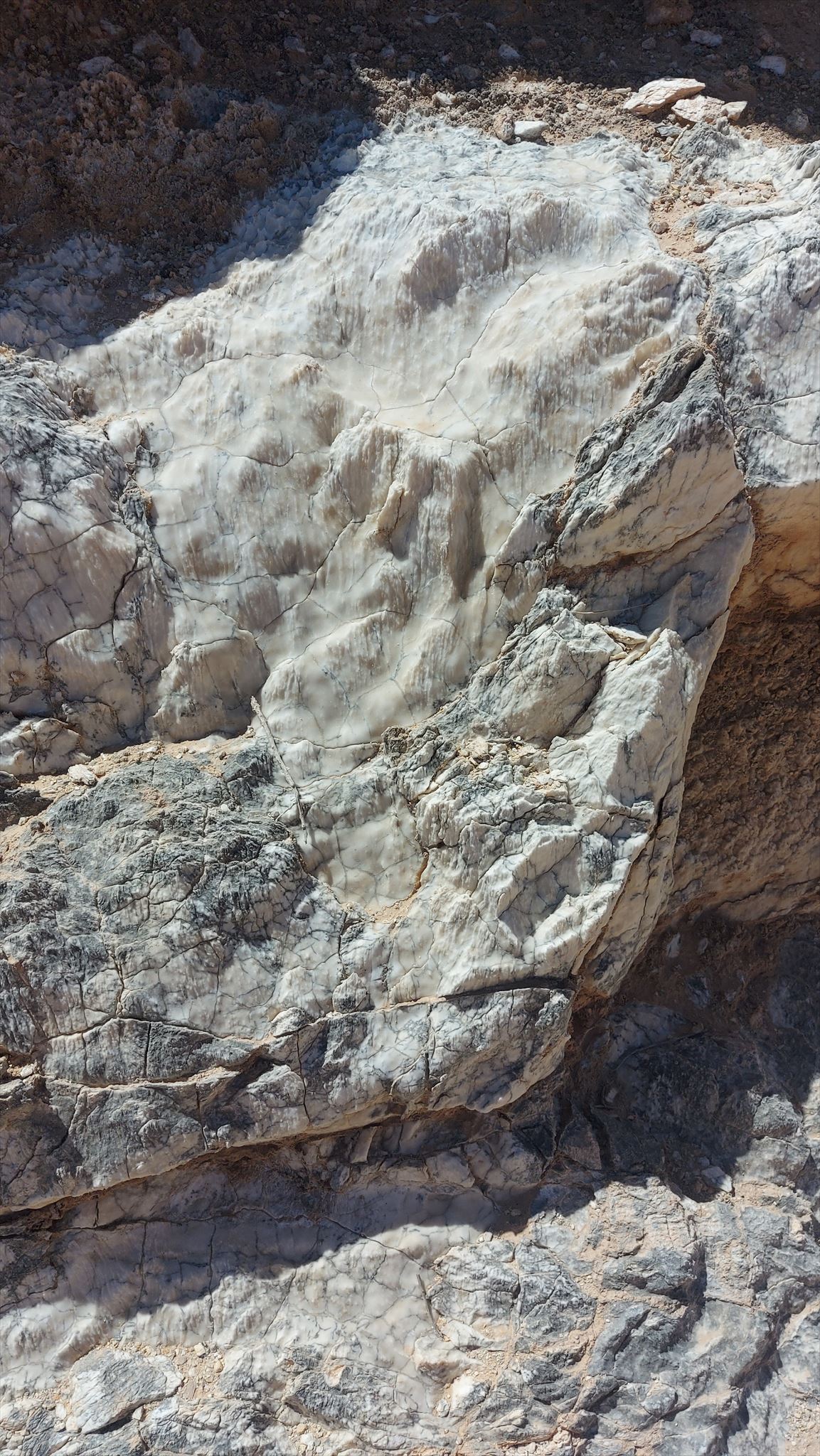
 There are a lot of different stones that have a bright white color. But some of them are very easy to recognize, if you know what to look for. When walking along the old Rommel's Piste you will see several patches of white rocks. And most of them are one of these two types : Marble and Gypsum
There are a lot of different stones that have a bright white color. But some of them are very easy to recognize, if you know what to look for. When walking along the old Rommel's Piste you will see several patches of white rocks. And most of them are one of these two types : Marble and Gypsum
Gypsum and marble are two distinct materials with unique characteristics, applications, and compositions. While they both have significant uses in construction and design, they differ greatly in appearance, use, and composition. In this article, we will explore the similarities and differences between these two materials.
Appearance:
Gypsum:
Gypsum is a soft mineral that is commonly found in sedimentary rock deposits. In its natural form, gypsum typically appears as a white or grayish-white crystalline substance. Its appearance is often described as being powdery or chalk-like. Gypsum is most commonly seen in its hydrated form, known as gypsum plaster or gypsum board. These variations have a smooth, matte texture and are typically used for interior wall and ceiling finishes. Gypsum can also be carved into intricate designs and sculptures due to its relative softness.

Marble:
Marble, on the other hand, is a metamorphic rock that is known for its striking beauty. It is characterized by its stunning array of colors and veining patterns. Marble can be found in shades of white, gray, pink, green, black, and even rare blues and purples. The veining in marble is a result of mineral impurities such as clay, silt, sand, or iron oxides, which create intricate and unique patterns. The surface of polished marble is glossy and reflective, giving it a luxurious and high-end appearance that is often used for flooring, countertops, and decorative elements.

Use:
Gypsum:
Gypsum is primarily used in the construction industry for various purposes. Gypsum plaster, also known as plaster of Paris, is used for interior wall and ceiling finishes due to its ease of application and fire-resistant properties. Gypsum board, commonly referred to as drywall, is a widely used building material for creating walls and ceilings. It provides an excellent surface for painting and is known for its sound-absorbing properties. Gypsum is also used in agriculture as a soil conditioner to improve crop yields and in medical applications for casting and immobilizing broken bones.
Marble:
Marble is celebrated for its aesthetic appeal and is often used in architectural and interior design for its beauty and elegance. It is frequently used in flooring, countertops, bathroom vanities, and wall cladding, giving spaces a timeless and luxurious feel. Marble sculptures and statues have been cherished throughout history for their artistic value. Due to its durability, marble is also used in high-traffic areas, such as hotel lobbies and government buildings.
Composition:
Gypsum:
Gypsum is a hydrated calcium sulfate mineral (CaSO4·2H2O). It consists of calcium, sulfur, and oxygen, with water molecules incorporated into its crystal structure. This composition makes gypsum relatively soft and easy to work with. When heated, gypsum loses its water content, turning into plaster of Paris, which can be rehydrated when mixed with water.
Marble:
Marble is predominantly composed of calcite or dolomite minerals, both of which are forms of calcium carbonate (CaCO3). These minerals are created through the recrystallization of limestone under high pressure and heat. The variations in color and veining are a result of impurities and other minerals present during the formation process. Marble is significantly harder than gypsum, making it a durable material for various applications.
In summary, gypsum and marble are distinctive materials with their own unique characteristics. Gypsum is appreciated for its utility in construction and its soft, matte appearance, while marble is revered for its breathtaking beauty and versatility in upscale design. These differences in appearance, use, and composition highlight the diversity of options available in the world of construction and design materials.
Your tasks in order to claim this earthcache as a find :
Go the both indicated waypoints and pick a little piece of (white) rock, then do these examinations:
1) Feel the rock. Does its surface feel smooth or grainy?
2) Can you feel individual grains in the rock?
3) Can you scratch the rock with your fingernail? Can you peel off a small sheet?
4) Can you see veins of different color running through the white bedrock?
5) Have a close look : Can you slightly see through the rock or is it impossible to see through it?
Based on your observations : which type of (white) rock did you find at WP1 and which type at WP2?
Feel free to post pictures of you along this trail, but please don't give away too much info.